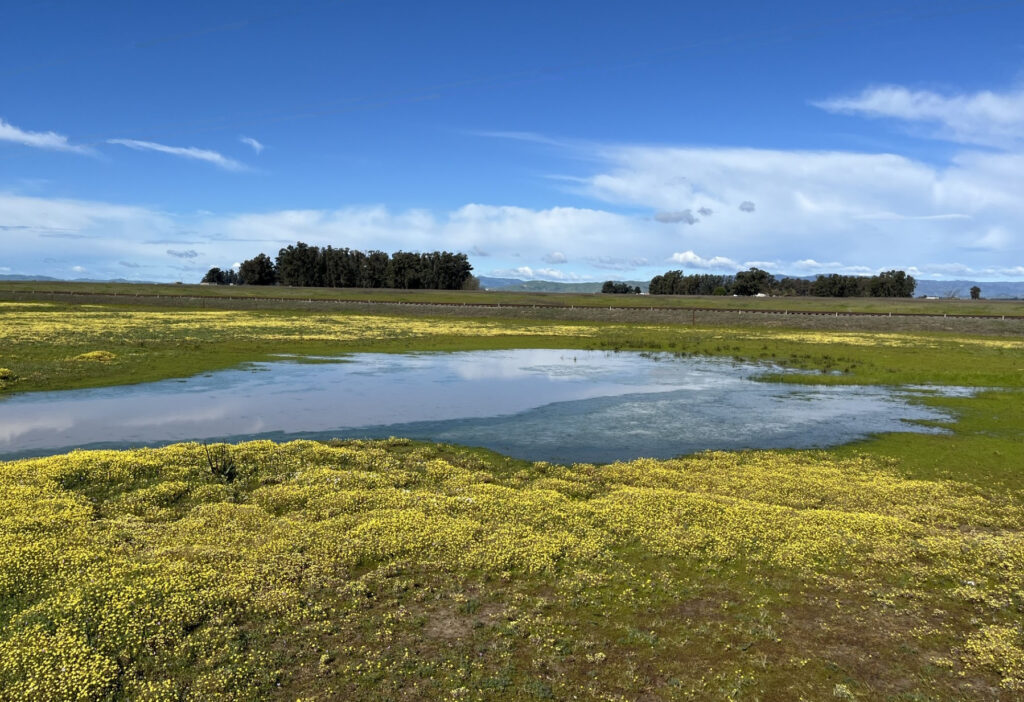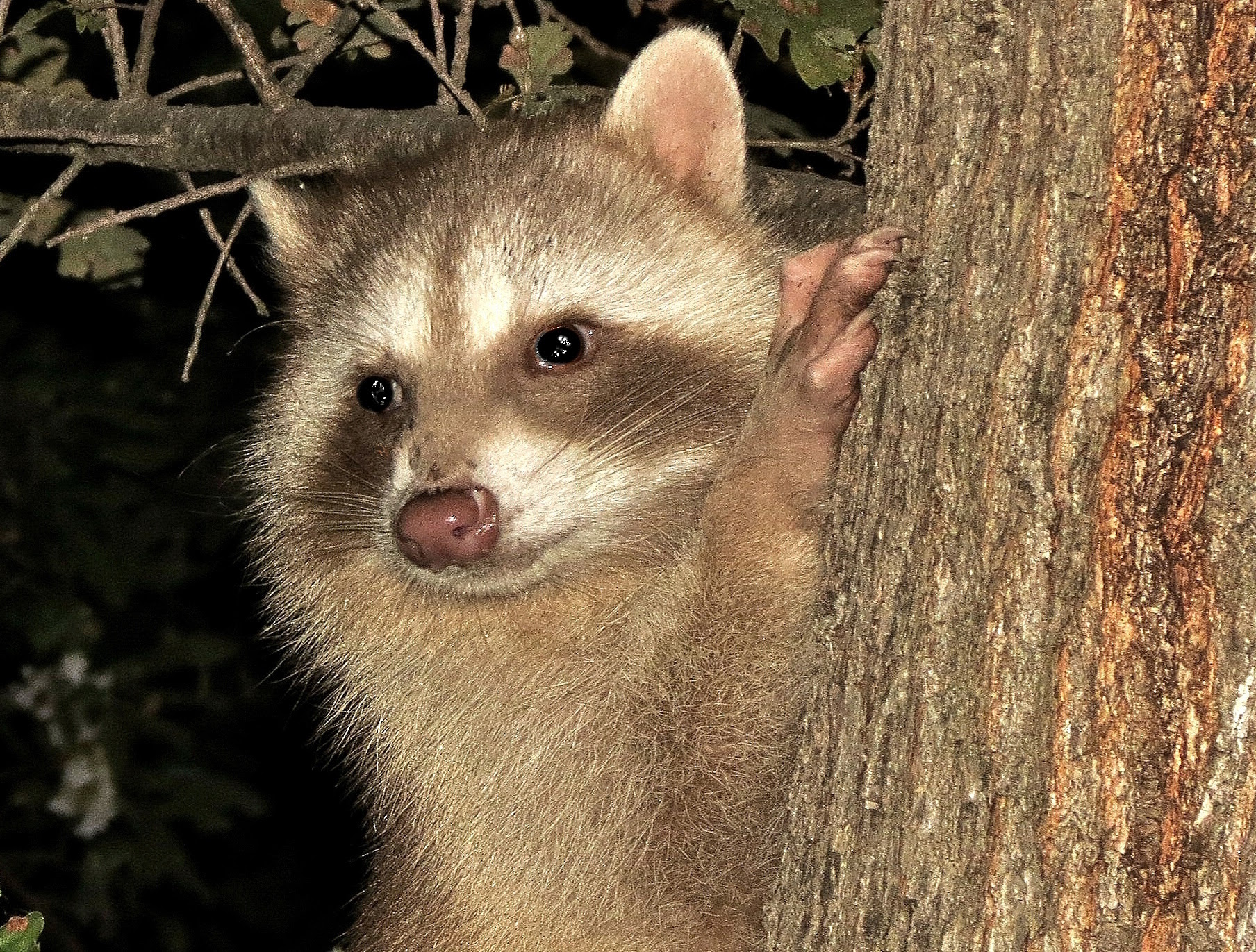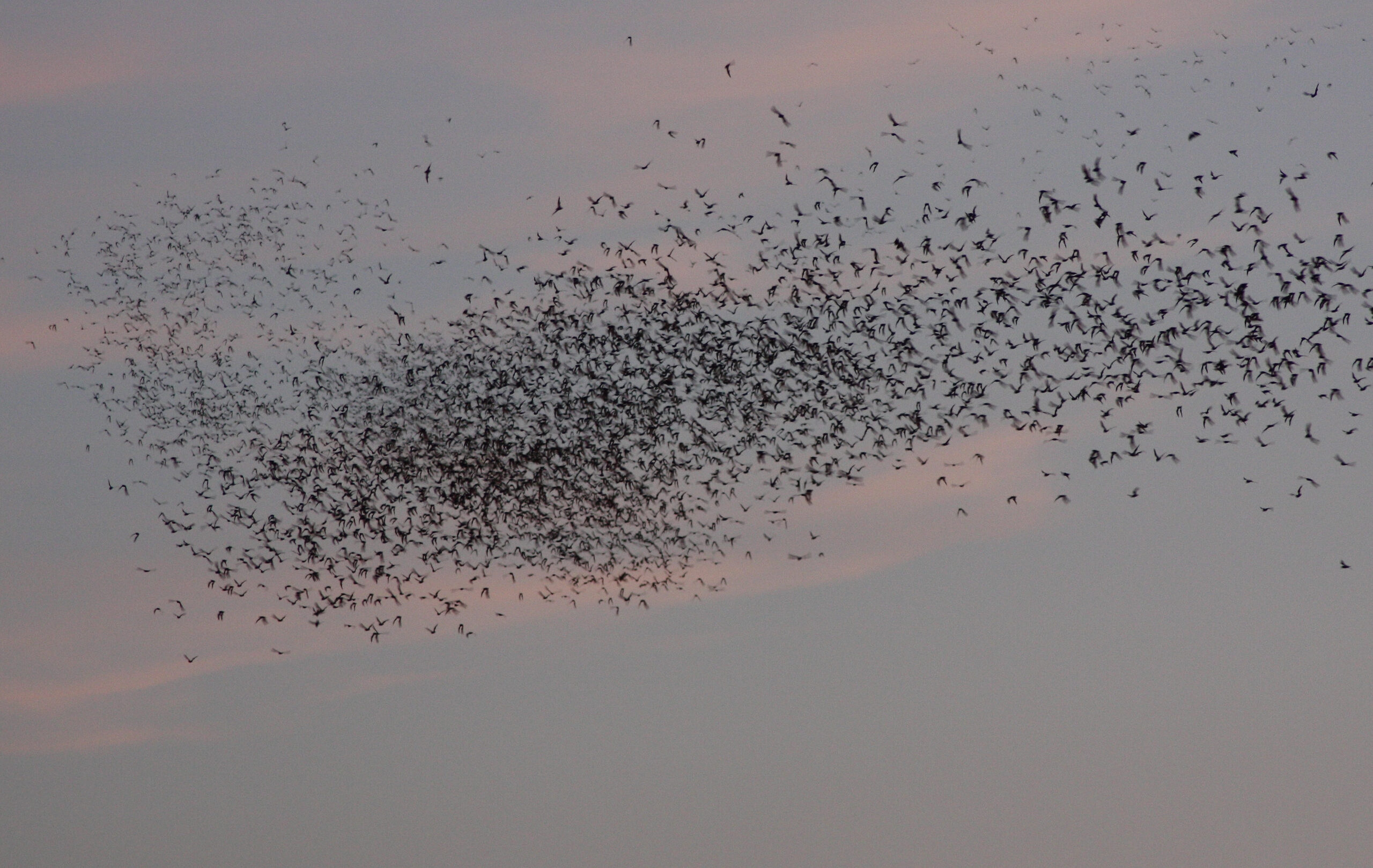Vernal pools are ephemeral, springtime, shallow, surface bodies of water perched on some kind of impermeable soil layer that limits downward percolation of rainwater. They only last weeks to a few months during the rainy season, after which they are completely dry. Despite their brief existence, they can be teaming with highly adapted plants and animals. Vernal pools are primarily concentrated in regions with a Mediterranean climate (cool, wet winters and hot, dry summers), like California. Due to a unique combination of climate and geology, the Central Valley has some of the most diverse vernal pools in the world.

Photo by Mike Davis
Are there vernal pools in the Yolo Bypass Wildlife Area? Yes, but only in certain areas. Let’s examine why that’s the case and why California has or, more accurately, had until recently, an abundance of vernal pools. About 240 million years ago, the edge of the North American continent was near the present-day foothills of the Sierra Nevada. Rivers dumped sediments off the coast and a coastal plain emerged. Underground, the Pacific plate, moving east, and North American plate, moving west, made contact, buckling a complex of ocean sediments and deeper rocks to form the coast ranges and foothills of the ancestral Sierra Nevada. The meeting of the plates caused active volcanism that resulted in deep underground granite (slowly cooled magma), which emerged about five million years ago as the Sierra Nevada. The seaway, the future Central Valley, between the two mountain ranges remained underwater for millions of years while marine sediments and erosion materials were continually deposited. Eventually, the seaway loss contact with the ocean, draining into Monterey Bay (likely) before the San Francisco Bay, and transitioned into a freshwater environment. Today, the upper soil profile in the Valley consists of alluvial and floodplain sediments in basins and terraces, and in some locations, volcanic soils. In many regions the Valley is nearly level, at least locally. In areas where water can’t drain, vernal pools have the potential to develop.
Vernal pools can be categorized by the type of restrictive soil layer that prevents downward percolation of water. Three types occur in the Central Valley. Hardpan vernal pools form when certain minerals bond and harden into a water-impervious layer a few feet below the surface; bedrock vernal pools form on volcanic flows near the surface; and claypan vernal pools form on old floodplain soils with a high clay content. The clay expands and seals when wet, preventing downward drainage. This is the type of vernal pool in the southern sector of the Yolo Bypass Wildlife Area, which is part of the 10,000-acre Tule Ranch purchased by the state in 2001. Within the Tule Ranch accession, an upland grassland habitat of about 1,800 acres, slightly elevated above the floodplain, supports some fairly large vernal pools. In the spring there are often spectacular wildflower displays. Because access is difficult and much of the area is a working cattle ranch, it is not open to the public. Much of the rest of the Wildlife Area is an active floodplain which is not conducive to the development of vernal pools due to continued sediment deposit and surface disturbance.
The relatively large playa pools on the nearby Greater Jepson Prairie are also primarily claypan but they sit on a low alluvial terrace at the base of the coastal foothills. That landscape is a small crustal block that is higher than the surrounding area, preventing its surface from being covered by new floodplain. For more on specific vernal pool landscapes in California, see Vollmar, J., et al. 2023. Conservation of California’s Great Valley Vernal Pool Landscapes. Vollmar Natural Lands Consulting, Inc.
Vernal pools in the Central Valley are home to more than 100 native plant species, many insects, at least ten fairy shrimp species (five of which are unknown outside the Valley), and several amphibians. More than half of the plants are endemic to California (found nowhere else). Vernal pool plants are somewhat amphibious since they germinate when the pool is inundated and can grow slowly underwater. When the pools dry in late spring, the plants mature rapidly. Small in stature, these annual plants often have showy and relatively large flowers to attract insect pollinators and set seed in a brief period of time. Some plants in California vernal pools are rare, such as some of the goldfields (Lasthenia spp.), meadowfoams (Limnanthes spp.), calicoflowers (Downingia spp.), navarretias (Navarretia spp.), and popcorn flowers (Plagiobothrys spp.). Similarly, some fairy shrimp that occur in Central Valley vernal pools such as the conservancy fairy shrimp, midvalley fairy shrimp, and longhorn fairy shrimp, as well as the vernal pool tadpole shrimp, are considered rare.
Other animals are more widespread. If you look closely into a vernal pool, you might see common crustaceans like seed shrimp (ostracods) with their two cupped shells. Although small at just a sixteenth of an inch or so in diameter, they are sometimes visible as they swim about in large numbers. Tiny cladocerans, known as water fleas (but not really fleas), such as Daphnia, swim in a distinctive jerky motion. Also visible may be flatworms, like Mesostoma, less than half of an inch long. These curious animals lack a body cavity, a circulatory system, and a respiratory organ. At times they are common, swimming just under the water surface to hunt for small prey. Some insects also call temporary bodies of water home. For example, predaceous diving beetles and their larvae, called water tigers, can be numerous. All these animals benefit from the lack of fish in vernal pools.
Very often vernal pools develop in the basins between closely and regularly spaced, small mounds called Mima mounds (named after the Mima Prairie in Washington). The size and shape of the mounds vary according to the underlying geology. They are a few feet to forty feet in diameter and are usually less than a few feet high. There are many vernal pool areas in California with Mima mounds. The forces behind their formation have not been determined with certainty but erosion, seismic activity (Berg, A. 1990. Geology 18:281–284), and soil movement by burrowing rodents (Reed, S. 2013. PhD Thesis, UC Berkeley) are a few possibilities. In some areas with larger, claypan vernal pools, like those found in the Yolo Bypass Wildlife Area, Mima mounds are absent or difficult to discern.
Vernal pools add to the amazing biodiversity of life found in California. For example, more plant species occur in California vernal pool habitats than in vernal pools anywhere in the world. Vernal pools also are extremely important breeding sites for some rare animals, such as the California tiger salamander, which depends on fishless bodies of water for reproduction. Today, less than 10% of the original vernal pool habitats remain in California but, fortunately, about 270,000 acres of vernal pool habitat in the Central Valley, including those in the Wildlife Area, have been protected. Conservation efforts to protect wetlands face ongoing challenges like urban sprawl, agricultural expansion, habitat destruction and fragmentation, non-native species, and a changing climate.
Note from Yolo Basin Foundation:
Did you know that Yolo Basin Foundation offers spring tours of the vernal pools at Grasslands Regional Park? Click here to learn more!




